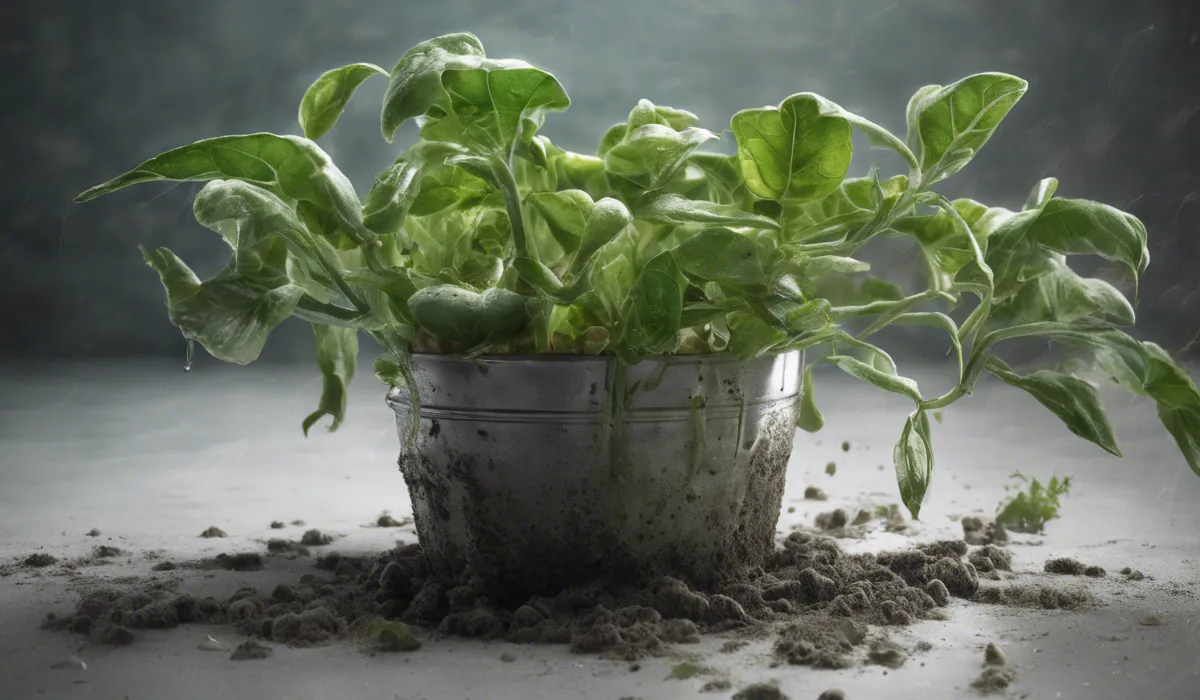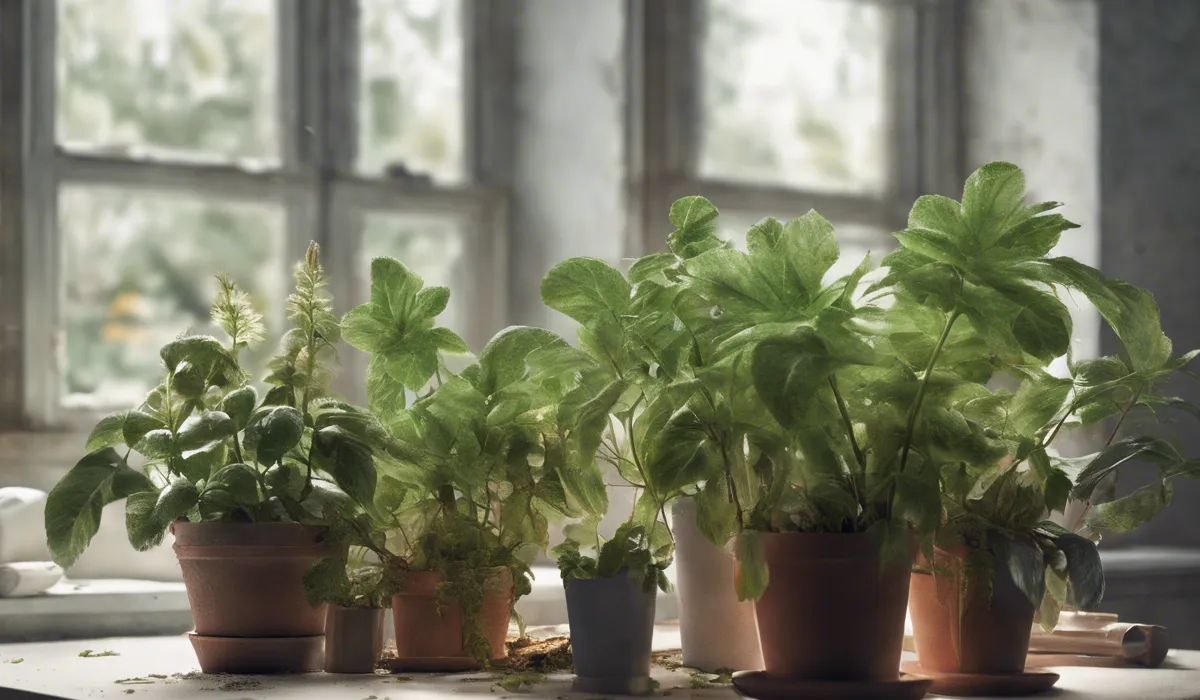Yes, certain plants can help with mold by reducing indoor humidity through transpiration, which can mitigate mold growth. However, plants alone are not a complete solution for mold issues, as proper ventilation and moisture control are also necessary.
The Relationship Between Plants and Mold

Understanding Mold. What It Is and Conditions It Thrives In?
Mold is a type of fungus that can grow both indoors and outdoors. It spreads by producing spores that float through the air.
Mold thrives in damp, warm, and humid conditions. It can often be found in bathrooms, kitchens, and basements where moisture levels are higher. If not addressed, mold can cause health problems and damage to your home.
The Basics of How Plants Affect Indoor Environments
Plants can influence the indoor environment in several ways. Through a process called transpiration, plants release moisture into the air.
They also absorb pollutants through their leaves, which can improve indoor air quality. However, the soil and standing water in plant containers can also be a breeding ground for mold if not managed properly.
Plants as Natural Dehumidifiers
Plants absorb water through their roots and then release it as vapor from their leaves, a process known as transpiration.
This can help to naturally reduce the humidity in your home, making it less hospitable for mold to grow. However, the impact of plants on indoor humidity levels is modest and should not be solely relied upon to control humidity and mold.
Potential for Plants to Either Deter or Promote Mold Growth
While plants can help clean the air, they can also contribute to mold growth if not cared for correctly.
Overwatering plants or allowing water to stand in saucers underneath pots can increase indoor humidity and create conditions that mold loves.
It’s important to balance the benefits of indoor plants with good plant care to prevent mold proliferation.
Plants That Can Help Control Mold

Specific Plants Known for Purifying Air
Some plants are particularly good at purifying the air. The snake plant, for instance, absorbs toxins and releases oxygen at night, while the spider plant is known for removing mold spores and other allergens from the air.
These plants can contribute to a healthier indoor environment when combined with other mold prevention strategies.
Plants with Anti-Mold Properties
Plants like English ivy, peace lilies, and bamboo palm have been shown to have anti-mold properties. These plants can absorb mold spores from the air and inhibit their growth.
Including a variety of these plants in your home can help reduce the presence of mold.
How These Plants May Reduce Mold Spores and Improve Air Quality?
By absorbing mold spores, plants can help prevent them from settling on surfaces and growing into larger mold colonies.
The plants act as natural air filters, trapping spores and integrating them into the soil where they may be broken down by microbes or simply remain harmless.
This can lead to improved air quality and a reduction in potential mold-related health issues.
Practical Tips for Using Plants to Help Control Mold in Your Home
To use plants effectively in controlling mold, position them throughout your home but avoid overcrowding.
Ensure that you’re taking care of the plants properly by not overwatering and by providing adequate drainage.
Additionally, consider using a dehumidifier in conjunction with houseplants to maintain optimal indoor humidity levels.
Best Practices for Preventing Mold in Plant-Heavy Environments

The Importance of Proper Plant Care to Prevent Mold
Taking good care of your plants is vital for preventing mold. This includes watering appropriately, not allowing water to sit in trays beneath pots, and choosing the right soil that provides good drainage.
Healthy plants are less likely to harbor mold and contribute to a cleaner indoor environment.
Strategies for Avoiding Overwatering and Ensuring Good Drainage
Overwatering is one of the main culprits of mold growth in plant soil. Water your plants only when the soil feels dry to the touch.
Make sure pots have holes in the bottom for drainage, and empty any excess water from saucers regularly.
Using pots with built-in drainage and saucers that can be easily emptied will help keep mold at bay.
Recommendations for Sunlight Exposure and Air Circulation
Sunlight and air circulation are powerful allies in the fight against mold. Place plants in areas where they will receive adequate sunlight, as this helps to keep the soil dry and discourages mold growth.
Additionally, ensure that your home has good airflow by using fans or opening windows, which can help reduce humidity and prevent mold.
Regular Cleaning and Maintenance of Plants and Their Surroundings
Regularly clean your plants’ leaves to remove dust and potential mold spores. Also, keep an eye on the soil and remove any visible mold growth immediately.
Clean the area around your plants often to prevent the accumulation of dust and organic matter, which can contribute to mold growth.
FAQs About Plants Helping with Mold
Can indoor plants reduce the risk of mold growth?
Yes, some indoor plants can help reduce the risk of mold growth by absorbing moisture through their leaves and roots, a process known as transpiration.
Are plants a reliable solution for preventing mold?
Plants can aid in reducing indoor humidity, but they should not be relied upon as the sole solution for mold prevention. Adequate ventilation and moisture control are also crucial.
What plants are best for mitigating mold growth indoors?
Plants like English ivy, peace lilies, and spider plants are known for their ability to help reduce indoor humidity, potentially mitigating mold growth.
How do plants help control indoor humidity?
Plants help control indoor humidity through transpiration, where they release water vapor into the air from their leaves, thereby potentially lowering humidity levels.
Is it enough to have plants to control mold in damp environments?
No, while plants can be part of a strategy to control humidity, they are not enough on their own to control mold in highly damp environments. Additional measures such as dehumidifiers and proper ventilation are needed.
Final Thoughts
Plants can aid in mold prevention by reducing indoor humidity through their transpiration process. This can contribute to a less hospitable environment for mold growth.
Nonetheless, relying solely on plants is insufficient for mold control. Effective mold management also demands proper ventilation and moisture regulation within the space.
